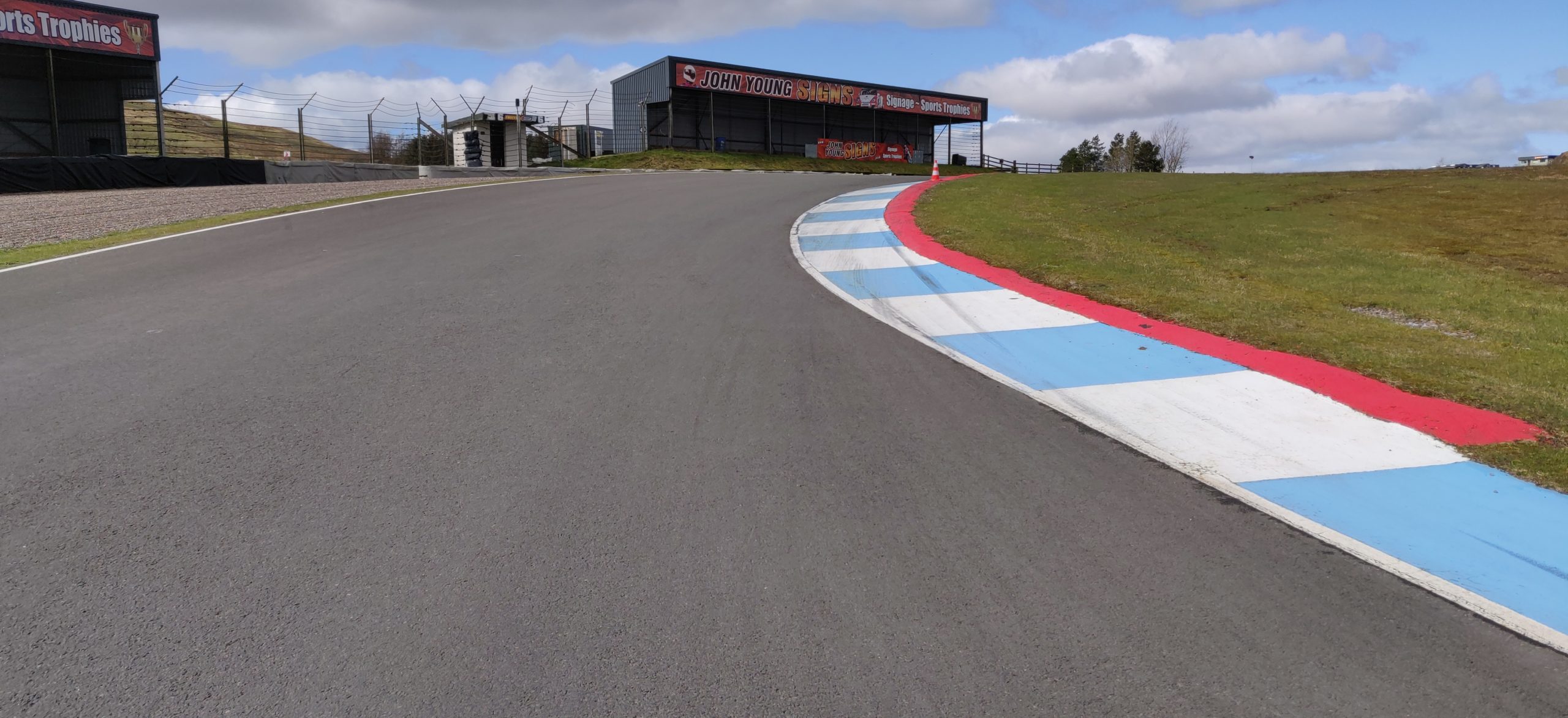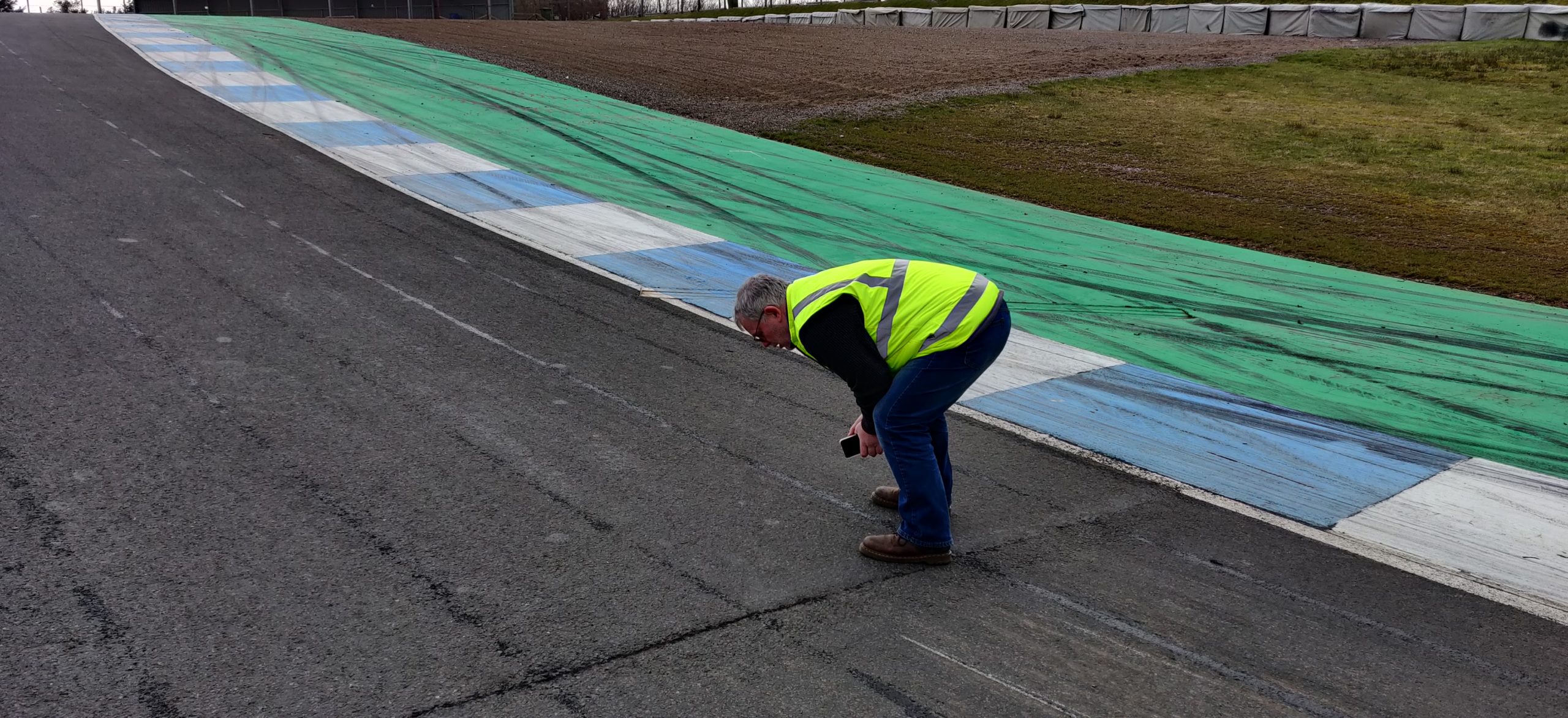Who:
For over 40 years the Knockhill Racetrack has been Scotland’s National Motorsport Centre and has played host to many of the UK’s top televised motorsport car and bike events. Knockhill is known to be a truly versatile venue for all events including corporate days, team building, karting, track days and driving experiences as well as vehicle testing.
Knockhill is Scotland’s only accredited FIA and Motorsport UK approved venue. With extensive and ongoing investment in its facilities it is able to provide, new and exciting, experiences and racing events, all situated on and around its 1.27 mile long circuit. As well as that, it has a hillside rally stage, 500m outdoor karting circuit, restaurants and conferencing facilities.
What was the challenge?
in the best possible condition is vital for Knockhill. Also, with many races and events taking place on the track certain areas get worn or damaged before others so having the data to enable the prioritisation of works on the track is an important consideration, as is the ability to design, plan and deliver the most suitable resurfacing works when needed.
What was the solution?
Knockhill employed the specialist testing and consultancy services of R3 Ltd. The two organisations already have a good working relationship. It was at Knockhill where R3 managing director, Dr Campbell Waddell, conducted many tests for his PhD. In return, Knockhill received the data from those tests, to start to build up a detailed insight into the condition of the surface of its track. During that time, Dr Waddell started to develop some of the specialist testing methodology and delivery that R3 now carries out today for its clients, including work on Grand Prix and MotoGP tracks in Singapore, Indonesia and around the world. One of these early tests was the refinement of R3’s GripMap Method, a test that quantifies racetrack surface grip.
In the future, R3 will undertake a range of different tests at Knockhill that will inform them of what remedial work is needed on the track and when to prioritise it as well as testing, designing, and planning work ready for the next resurfacing of the track, as part of an overall asset management plan for the track surface, to ensure it always remains in good condition.
By taking core tests of the track, for example, helps R3 look in detail at any excessive ravelling, worn joints, settlement, movement, or issues created by water damage.
Standard testing moving forward will look for void content in the asphalt as well as air voids as well as any damage or crushed aggregates and cracking. Advanced testing is where the core sample is passed under a high-powered microscope to determine the extend of cracking and micro-cracking in the aggregate and whole core sample. This test also checks for layer build up as well as decay and failures. The expert team at R3 also study bumps in the asphalt which occur when a certain wavelength appears in the mega-texture of the asphalt which creates inconsistencies in the surface. These can lead to major safety issues, especially when the ‘racing corridor experiences polished aggregate which will make it slippery.
R3 Ltd will also use its advanced 3D Modelling which will be especially relevant when planning for resurfacing. The company recently invested in Topcon’s RD-M1 Scanner, which will R3 produce more sustainable, durable and smoother surfaces via Topcon’s Smoothride system.
R3 is working with the data collected by the RD-M1 scanner on racetracks to explore the potential of the hardware. By working with the data, R3 are able to identify surface characteristic features unique to racetrack surfaces. This is giving a greater insight into how racetrack surfaces evolve and will help their clients with more accurate asset monitoring.
The Topcon RD-M1 Scanner will help R3 Ltd with its specialist material testing work on race track surfaces to enable its clients to have a more detailed understanding of the condition of the surface of the racetrack before work such as resurfacing or other surface treatments go ahead.
Topcon’s RD-M1 Scanner collects continuous data via a driven survey that gives precise surface conditions using a combination of paving automation and 3D data collecting technology which can be then used to create a detailed design.
The scanner works seamlessly with an integrated HiPer SR GNSS receiver and Inertial Measurement Unit (IMU) to accurately capture point data while driving at normal speeds.
Data and the design can then be linked to Topcon’s 3D-MC Milling system using a 3D design model which automates the milling machines to the accurate milling depth on the design prepared from the scanner data. The system works from accurate Topcon Millimetre GPS technology and a 3D design, leading the milling crew to very accurate results. The system offers millimetre-level accuracy, a 2400 and 40 metre horizontal and vertical working range.
This means, R3 can now help contractors and material producers with material development from the development stage through construction of a trial site to condition monitoring of the material offering a built record and full analysis of the material surface condition.
On the Knockhill track, this will help R3 understand more about the macro-texture of the surface at key points of the track via the scanner which provides information on rubber build-up or polished aggregate and any movement changes. Data from the scanner can then be overlayed from historical scan data to predict trends in deterioration that would inform future work programmes including the right time for full resurfacing when appropriate. This would also include giving an international roughness index (IRI), the roughness index most commonly obtained from measured longitudinal road profiles.
“This kind of specialist testing is needed to keep tracks like Knockhill in better condition for longer. Non-specialist testing which is usually applied to the highway network and uses national highway standard, is ideal for A and B roads or the strategic network but not applicable to the racetrack environment where high speed vehicles are creating unusual forces on the surface of the track. If the wrong tests or methodology is applied to racetracks, it could end up with serious safety challenges endangering the drivers or riders,” says Dr Waddell.
Once track testing is complete, R3 will produce detailed reports for Knockhill, advising on the appropriate remedial work needed as well as any specialist surface treatments as well as the most suitable materials to be used, designed especially for racetracks, should it be required. The testing provides high levels of quality control, enabling Knockhill to save money on long-term maintenance while maintaining the surface of the track, creating a more durable and smother ride.
I have known the team at R3 for some time, especially Dr Waddell who conducted his PHD testing here at Knockhill. The team is extremely knowledgeable, produces detailed and highly accurate reports from its extensive specialist testing but still provide me with highly-technical information in an easy to understand way. I trust them as the ‘go-to’ experts in track surface testing and they will be very much part of our future plans for any work or changes we make to the track in the future.
They come highly recommended from me.



